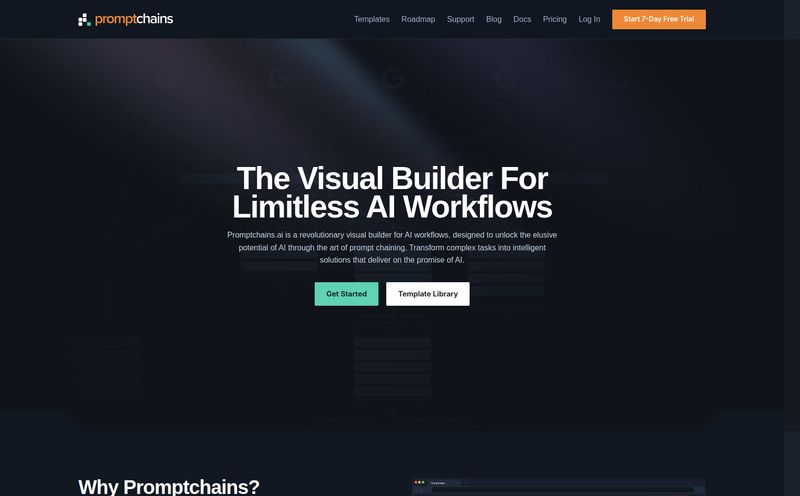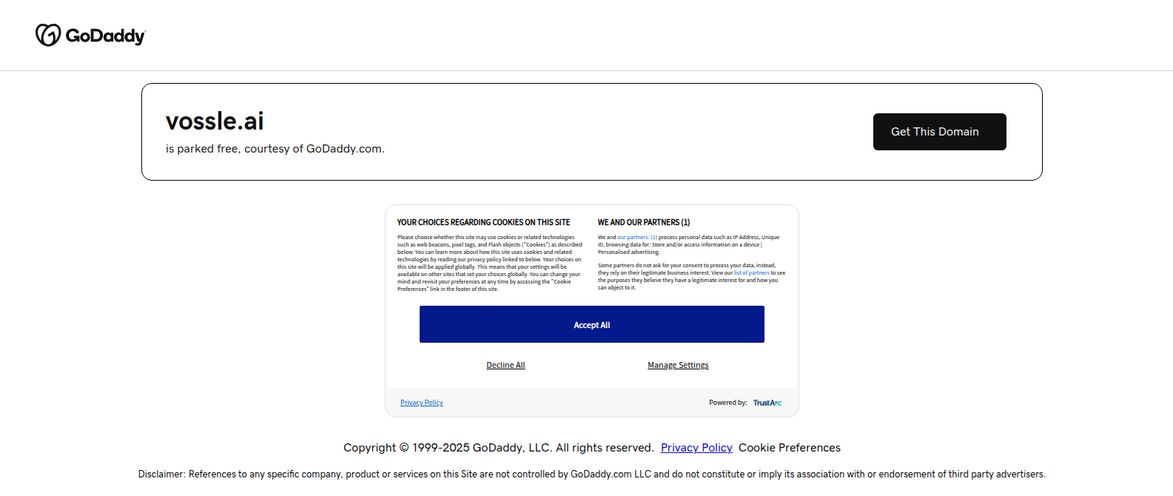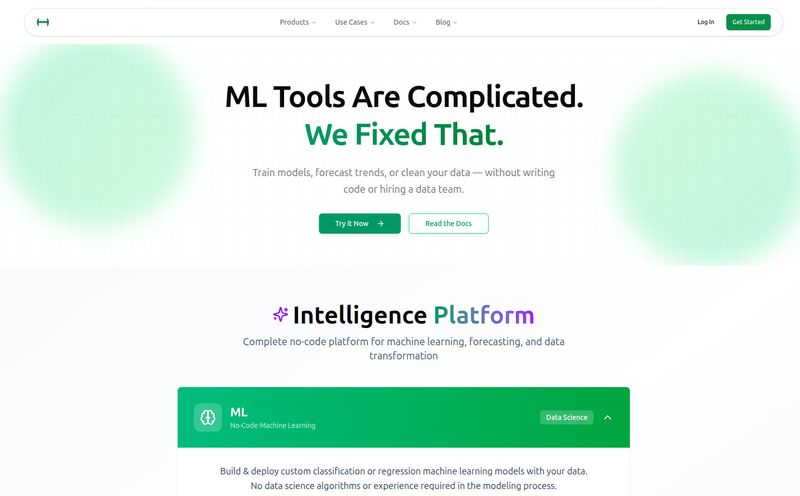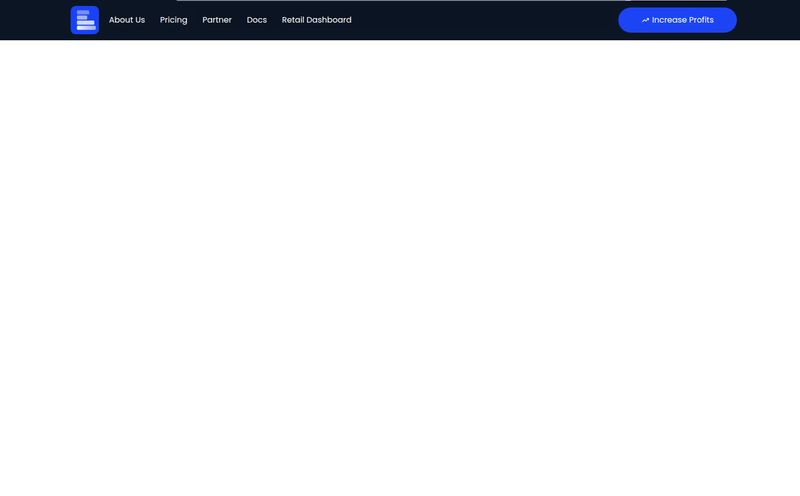You hear about artists making a killing, but then you look into it and you're hit with words like ‘smart contracts’, ‘gas fees’, ‘minting’, and ‘layer 2 solutions’. It’s enough to make any creative’s head spin right off their shoulders. I’ve been in the trenches of SEO and digital trends for years, and even I get a headache sometimes.
For a while, there's been this chasm between the incredible explosion of AI art generators (we've all lost an afternoon to Midjourney, right?) and the Web3 world of NFTs. Getting your amazing, prompt-crafted masterpiece from a .jpeg to a non-fungible token on the blockchain was… a process. A clunky, often expensive process.
So, when a tool pops up with a name like NFTngine and promises to “Generate NFTs in Seconds,” my cynical inner blogger immediately raises an eyebrow. I've seen tools promise the world and deliver a tiny, pixelated globe. But this one, still in its beta phase, felt different. It’s got a simplicity that’s almost startling. So, is it another flash in the pan, or something genuinely useful for creators?
So What Exactly Is NFTngine?
Okay, let's strip away the jargon. Imagine you have a brilliant idea for a piece of art. Instead of picking up a paintbrush, you type a description: “A neon-drenched cyberpunk alleyway with a lone cat, cinematic, hyperrealistic.”
Normally, you’d pop that into an AI image generator. Then you’d have to find a separate platform like OpenSea or Rarible, upload the image, fill out a ton of fields, and pay a hefty gas fee on the Ethereum mainnet to mint it as an NFT.
NFTngine basically squishes all those steps into one. It’s a no-code platform that lets you type your description, generates the AI image for you, and then mints that image as an NFT directly onto the Polygon blockchain. It’s the bridge I didn’t know I needed between being a prompt-wizard and an NFT creator. No code, no fuss, just your idea and a couple of clicks.

Visit NFTngine
The whole thing is the brainchild of developers lakshya.eth and Saurabh, and its mission seems crystal clear: make NFT creation accessible to everyone, not just the tech-savvy.
My First Impressions of the Platform
When you land on the NFTngine site, you’re greeted with… well, not much. And I mean that in the best way possible. It's clean. Almost aggressively simple. There's a title, a single text box for your NFT description, and a big purple button that says “Generate NFTs.” That’s it. No clutter, no confusing menus, no distracting animations.
The process is exactly what it looks like:
- Connect Your Wallet: A standard step for any Web3 application. You'll see a 'Connect Wallet' button at the top right, which will likely support common wallets like MetaMask.
- Write Your Prompt: This is where the magic happens. You pour your creative soul into that text box.
- Generate: You hit the button and the 'engine' does its thing—first creating the image, then minting it.
This minimalism is a double-edged sword, of course. For a beginner, it's a godsend. For a seasoned NFT creator, it might feel a bit restrictive. But we'll get to that later.
Why Building on Polygon Is a Genius Move
I have to give the developers major props for their choice of blockchain. Building on Polygon is a massive win for the intended user. If you’ve ever tried to mint anything on the Ethereum mainnet during peak hours, you know the pain of watching gas fees soar higher than the price of the art you’re trying to sell. It's a huge barrier to entry for experimentation.
Polygon, being a Layer 2 scaling solution for Ethereum, offers dramatically lower transaction costs and faster speeds. This means you can mint an NFT for pennies instead of… well, a small fortune. For a tool designed for rapid creation and experimentation, this isn't just a nice feature; it’s the entire foundation of its usability. It lets you play, create, and even mess up without going broke. Honestly, this is the kind of practical thinking the Web3 space desperately needs more of.
The Big Advantages of Using NFTngine
After playing around with the concept, a few clear benefits stand out. This isn't just about being easy; it's about changing who gets to participate. The biggest draw is undeniably the elimination of the coding barrier. You don't need to know what Solidity is or how to deploy a smart contract. If you can write a tweet, you can create an NFT. This opens the door for writers, marketers, and random creative thinkers to turn their ideas into tangible digital assets.
The integration of AI art generation and minting into a single flow is another huge plus. It’s a streamlined process that saves time and mental energy. It feels less like a complex technical task and more like a simple creative act, which is what it should be. It acts as a fantastic bridge between the AI art community and the Web3 world, two circles that have a suprising amount of overlap but have been separated by technical hurdles.
Some Things to Keep in Mind
Now, it’s not all sunshine and low gas fees. Since the tool is still in beta, there are some unknowns and potential downsides. First and foremost, you are completely reliant on the quality of the AI image generator. We all know that AI can be fickle. For every masterpiece it creates, it might churn out five images where everyone has seven fingers. You lack the fine-tuned control you might get from running your own Stable Diffusion model or meticulously crafting prompts in Midjourney with multiple re-rolls. What you get is what you get.
There's also limited information on customization options right now. Can you set creator royalties? Can you add custom properties or traits to your NFT's metadata? Can you mint an entire collection or just single tokens? These are crucial questions for anyone looking to get serious. My guess is that these features might be on the roadmap, but for now, NFTngine seems laser-focused on the single-mint experience. It’s more like a digital vending machine for NFTs than a full-blown creator studio.
What About the Price Tag?
This is the beautiful part. As of this writing, there's no official pricing information, which strongly suggests that NFTngine is free to use during its beta phase. You'll still be responsible for the Polygon network's gas fees for minting, but as we discussed, those are typically very, very low. This makes it an almost risk-free environment to experiment in. I'll be keeping an eye out for any official announcements on pricing once it moves out of beta, but for now, the barrier to entry is practically zero.
Who Is This Tool Really For?
NFTngine isn't trying to replace the comprehensive, high-end NFT creation platforms, and that's okay. It has a very specific, and very valuable, audience in mind.
I see this being perfect for:
- AI Artists and Hobbyists: People who love generating AI art and want a simple way to immortalize their best creations on the blockchain.
- Web3 Newcomers: If you're curious about NFTs but terrified of the complexity, this is your sandbox. It's the perfect first step.
- Content Creators and Marketers: Need a quick, unique visual for a campaign? Want to offer a small, fun NFT as a reward to your audience? This is a fast and effective way to do it.
- Anyone with an Idea: The barrier is so low that anyone with a creative spark can give it a shot. It's democratizing, and I love that.
Frequently Asked Questions
- Do I need to know how to code to use NFTngine?
- Absolutely not! That's the whole point. It's a completely no-code platform. If you can type a sentence, you have all the technical skills you need.
- Do I need a crypto wallet?
- Yes, you will need a Web3 wallet that's compatible with the Polygon network, like MetaMask. This is how you'll connect to the platform and pay the small gas fees to mint your NFT.
- Is NFTngine free to use?
- Currently, the platform itself appears to be free while in beta. You only need to cover the minor gas fees on the Polygon network for the minting transaction.
- What blockchain does NFTngine use?
- It's built exclusively on the Polygon blockchain. This ensures that minting is fast and affordable for everyone.
- Can I sell the NFTs I create with NFTngine?
- Yes. Once an NFT is minted to your wallet, it's yours. You can then list it for sale on any NFT marketplace that supports the Polygon network, such as OpenSea or Rarible.
- What kind of control do I have over the final image?
- Your control is primarily through the text prompt you provide. The quality and style of the final image depend on the platform's underlying AI model. You don't have control over things like re-rolling or manual editing after the fact.
My Final Verdict on NFTngine
So, is NFTngine a game-changer? For a certain type of creator, I think it absolutely is. It’s not a Swiss Army knife for power users, but it’s not trying to be. It’s a sharp, effective tool designed for one specific job: turning a simple text idea into a blockchain asset, quickly and cheaply.
It represents a trend I'm excited to see in Web3—a move away from gatekeeping and complexity towards accessibility and fun. It lowers the intimidatingly high bar for entry and invites more people to come and play in the sandbox. While I’m eager to see how it develops and what features get added post-beta, its current form is already a powerful statement. It's a fantastic starting point for the creatively curious, and for that alone, it gets a big thumbs-up from me.
Reference and Sources
- NFTngine Official Website: nftngine.xyz
- Polygon Technology: https://polygon.technology/
- Lakshya's Twitter Profile: https://twitter.com/lakshya_eth



